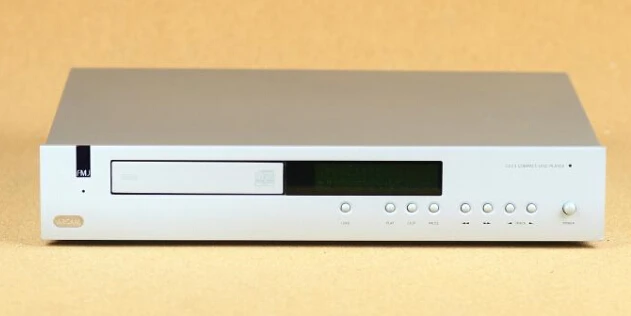In 2007, Didier Hamdi, a flamboyant ex-motorsportsman, bought the well-known French hi-fi manufacturer Micromega, relegating company founder Daniel Schar to engineering duties. The CD-30, released in 2010, was one of the first items of the new era.
On the surface, it didn’t appear to be anything extraordinary. It was a decent player, but it didn’t measure up to other £1,600 machines in terms of physical size and weight. It seemed a little fragile at 430x265x69mm and 4.5kg, though the fascia finish was excellent enough. The rear panel, on the other hand, exhibited a lack of attention to detail, with greater panel gaps than we’d like to see — if this had been a Japanese machine, the engineer in charge would have been encouraged to do seppuku! In addition, the casework was very resonant; a dampening panel or three would have been beneficial.
From a distance, the CD-30’s brilliant blue ten-character dot matrix display was simple to read, and the buttons had a good, albeit slightly clumsy, action. It is indeed pleasingly straightforward and uncomplicated to operate, owing to the fact that it is virtually lacking of capabilities — it is just a plain, old-school CD player, which some may actually prefer! The terrible draw loader, which is abrasive compared to rivals at half the price, was something I didn’t like. Audiolab’s 8200CD, for example, performs better in this area.
The drive mechanics, servo, decoding circuits, and user interface portion were all fed by an R-core transformer, which also had linear regulators with high power noise rejection. The mech was a Sony KHM313 or Sanyo SFH850 DVD-ROM player, controlled by a Philips SAA78247 and Micromega proprietary software that ran error correction optimised for sound quality rather than mobile use; the code drove the mech for real-time data retrieval. The data word length was additionally upscaled to 24-bit and upsampled to 132.3kHz (three times that of a CD’s 44.1kHz). The Analogue Devices AD1853 DAC, an eight times oversampling multibit Delta Sigma architecture, was then used.
Because it’s neither achingly good looking nor rugged and sturdy, you’d never label this CD player a winner on hi-fi store shelves. However, as soon as you start listening to it, things start to change for the better. It offers a crisp, open, and powerful sound that is very ‘widescreen’ in presentation, neutral, and three-dimensional. Although it isn’t euphonic, it does sound slightly warmer than the Audiolab. It boasts a high level of sophistication, both in terms of tonality and rhythmic dexterity. It, for example, brings cymbals into sharp focus while retaining their delicate dynamic inflections. It has a tremendously taut bass guitar sound that mixes intricacy and authority, and it rips off rim shots like a machine gun, demonstrating great grip.
Bass isn’t the most powerful you’ll hear; it’s a competent, if not outstanding, performer in the low frequencies. It’s well-articulated, tuneful, and propels the song forward in a way that surprises its competitors. This connects to the gorgeous, airy, and clear midrange, resulting in a confident performance. The CD30 makes everything seem simple; it’s well-crafted and devoid of evident flaws. This is what will entice potential buyers if they haven’t been turned off by the substandard casework. It’s confident and commanding, with superb rhythmic flow and superior dynamic articulation. Yes, it’s French, so it has personality – and a very charming personality at that!







